Browse Exhibits (19 total)
Steele Vintage Broadcast Microphone Collection

Since the birth of broadcast radio in 1906, the microphone has been the centerpiece of emerging technologies that allowed the human voice to be heard live by vast audiences. Many microphones became icons of the radio and television industry, including the RCA 44 and 77 series microphones which seemed ubiquitous in the early television era, and the Shure 55 series, dubbed “The Elvis Microphone” for its frequent appearance on stage with Elvis Presley.
Mr. James U. Steele collected 226 microphones and subsequently donated them to the University of Georgia's Special Collections Library in 2011. The collection is now housed in The Walter J. Brown Media Archives in the Library, and can frequently be found on display in the Archives' exhibition space.
Covered With Glory: Football at UGA, 1892-1917
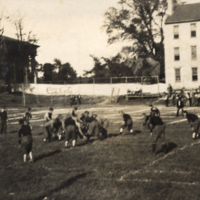
'Alma Mater' echoed over the hills. 'Glory, Glory to Old Georgia' in its wake.
- Atlanta Journal, October 31, 1915
This is a digital exhibit examining the early history of the University of Georgia football program, 1892-1917. These years saw the formation of the program, the establishment of several traditions and rivalries which carry on to the current day, and the careers of several prominent players and coaches.
This digital exhibit is concurrent with a physical exhibit that will be on display at the Richard B. Russell Special Collections Libraries Building from August 31 through December 22, 2017, though this website will be available online after the physical exhibit has been removed.
Further research into the history of University of Georgia athletics can be done through the collections of the Hargrett Library, which holds the archives of the University as well as the archives of the UGA Athletic Association.
All materials and photographs in this exhibit are from the collections of the Hargrett Rare Book & Manuscript Library. Permission to copy or in any way re-use these images must be granted through the Hargrett Library.
For more information on the Hargrett Library, please follow us on Twitter and Instagram. As well as updates on our collections, exhibits, and programs, we offer photos and information relating to the history of UGA and Athens. For both services, we are @hargrettlibrary.
Fighting Spirit: Wally Butts and UGA Football, 1939-1950
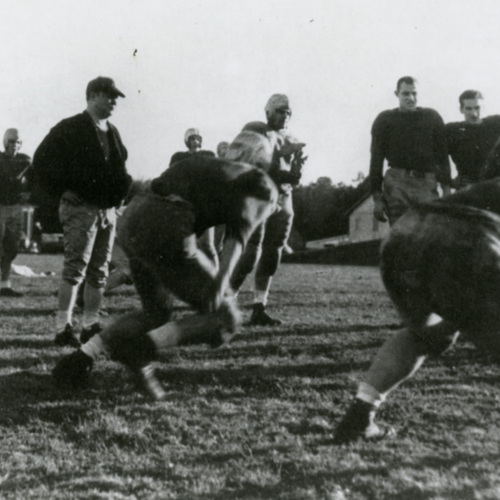
It was [Howell] Hollis who revealed that left end George Poschner played 55 minutes with stomach cramps, which coupled with Sinkwich's gritty play, reflects the fighting spirit of the battling Georgians.
-- Paul Lowry, Los Angeles Times. January 2, 1943
This digital exhibit explores the University of Georgia's football team during the 1940s. This decade saw the Georgia Bulldogs reach the pinnacle of national success for the first time in the program's history, but also saw the team struggle to adjust to the changes brought about by World War 2.
This digital exhibit is concurrent with a physical museum exhibit that will be on display at the Richard B. Russell Special Collections Libraries Building from September 2018 through May 2019, though this website will be available online after the physical exhibit has been removed.
Further research into the history of University of Georgia athletics can be done through the collections of the Hargrett Rare Book & Manuscript Library, which hold the archives of the University as well as the archives of the UGA Athletic Association.
All materials and photographs in this exhibit are from the collections of the Hargrett Rare Book & Manuscript Library. Permission to copy or in any way re-use these images must be granted through the Hargrett Library.
For more information on the Hargrett Library, please follow us on Twitter and Instagram. As well as updates on our collections, exhibits, and programs, we offer photos and information relating to the history of UGA and Athens. For both services, we are @hargrettlibrary.
The Strategies of Suffrage: Mobilizing a Nation for Women's Rights
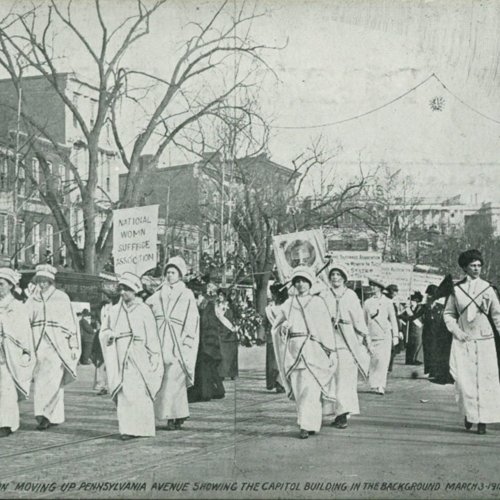
In 1848, more than 300 attendees gathered in Seneca Falls, New York to discuss women’s rights. That meeting catalyzed an organized, national movement. In the decades that followed, suffragists gathered, discussed, spoke, wrote, performed, paraded, and protested to give American women the right to vote. They waged a determined battle for greater agency, one that united women across barriers of race and class while also revealing social tensions and racial prejudices that persisted in American society.
This exhibit explores the women’s suffrage movement from the hosting of the Seneca Falls Convention in 1848 until the ratification of the 19th Amendment to the Constitution in 1920. It focuses on the visual and verbal appeals activists used to promote their message to the public. The publications, photographs, advertisements and ephemera displayed here document the strategy and struggle of this suffrage movement.
Acknowledgements
This exhibit was made possible with collections and support from the Lucy Hargrett Draper Center and Archives for the Study of the Rights of Women in History and Law. In addition, we thank our curator, Sidonia Serafini; Mary Linnemann, who assisted with scanning and graphics creation; Dr. Nan McMurray, who served as an outside reader for the script; Amber Prentiss and Kathleen Kern, our tireless fact checkers; Zakkary Greene, who assisted in the production of graphics; and Celia Clark, who assisted with object retrieval and overall organization.
Unless otherwise identified, all items featured in this digital exhibit are part of the collections of the Lucy Hargrett Draper Center and Archives for the Study of the Rights of Women in History and Law at the Hargrett Rare Book and Manuscript Library.
Freemasonry in Georgia: Ideals, Imagery, and Impact
Freemasonry was a new social organization when it emerged around 1720 in England with the founding of its authoritative body, Grand Lodge. Initially it was a secret society for men of varied backgrounds who met in lodges to improve themselves through enlightened practices of fraternity, liberty, tolerance, and benevolence. Rich in humanist learning and visual traditions, the fraternity evolved and spread across the globe thanks to British imperialism and new orders and rites that included women and people of color. Nowhere did it enjoy more respectability than in the United States. Never entirely secret, freemasonry contributed in visible ways to American culture and values, and its particular terminology entered everyday speech.
This exhibition explores the ideals, imagery, and impact of freemasonry in Georgia. The physical materials displayed demonstrate the ambitions and tensions that existed within freemasonry. Organized in three sections that parallel the masonic symbol of the three columns of Strength, Wisdom, and Beauty, these materials are interpreted in their masonic significance as well as from a modern, critical perspective.
Acknowledgements
The research for this exhibition and its accompanying catalogue was generously supported by a multi-year grant from the Mellon Foundation secured through the University of Georgia’s Willson Center for Humanities and Arts. The Lamar Dodd School of Art also furnished funding for my research travel and presentations at conferences.
I am profoundly grateful to the directors and staff of UGA’s Special Collections Libraries, as well as those of the Atlanta Masonic Library, the Chancellor Robert L. Livingston Masonic Library, the House of the Temple Library, and the Schomburg Center for Research in Black Culture at the New York Public Library. Thank you also to the Georgia Museum of Art and the Stuart A. Rose Manuscript, Archives, and Rare Book Library for the loan of key materials that enhance the show.
- Dr. Alisa Luxenberg, Exhibition Curator
Making Space: Fighting for Inclusion, Building Community at UGA
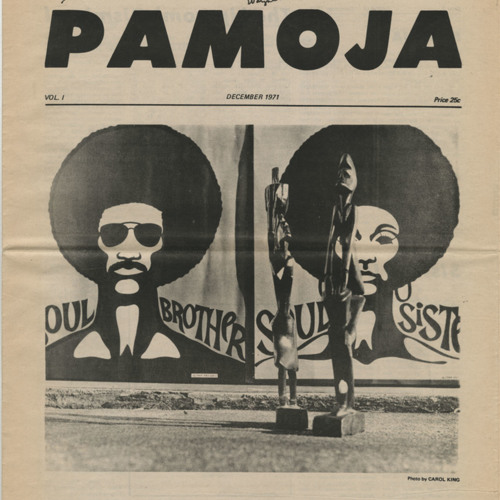
In 1961, Hamilton Holmes and Charlayne Hunter became the first Black students to enroll at the University of Georgia. Facing down adversity, they succeeded in desegregating the campus and winning a battle in the broader struggle for civil rights. However, the process of integration and building a more inclusive university continues today. Making Space: Fighting for Inclusion, Building Community at UGA explores the stories of these trailblazing students and those that followed them in shaping the campus.
The exhibit considers the ways that Black and LGBTQ+ students have cultivated spaces for themselves at UGA since the 1960s, finding agency and building safe spaces. It will highlight their activities - how they gathered, lobbied, and protested for acceptance and change. It will consider the people and places that offered support to these students, as well as those that put up barriers to block the path forward.
Today, the university recognizes that each student is made up of many identities. The intersection of these different identities shape the perspective of each student and their experience on an ever-changing campus. Making Space will serve as a timely guide for thinking about and advocating for continued progress not just on one college campus, but within a nation that so often looks to its past as a roadmap to its future.
Acknowledgements
This exhibit was inspired by the 60th anniversary of UGA’s desegregation, and made possible through the hard work and contributions of many people on our team. Thank you to Chanara Andrews, our student curator who worked in the strange new world of 2020 to develop the exhibit script. Thank you to Steve Armour, university archives and electronic records archivist, for assisting with early discussions on content and direction and to Kat Stein, director of the Hargrett Library, for her support and encouragement. Thank you also to Mary Linnemann, who assisted with scanning and graphics creation; to Dr. Barbara McCaskill, Dr. Nan McMurray, and Patrice Green, who all served as outside readers for the script; to Diane Trap, who assisted with fact checking; and to Jan Hebbard who refined the script, selected items for display, and assisted with object retrieval and overall organization.
K-12 Resources @ UGA Special Collections
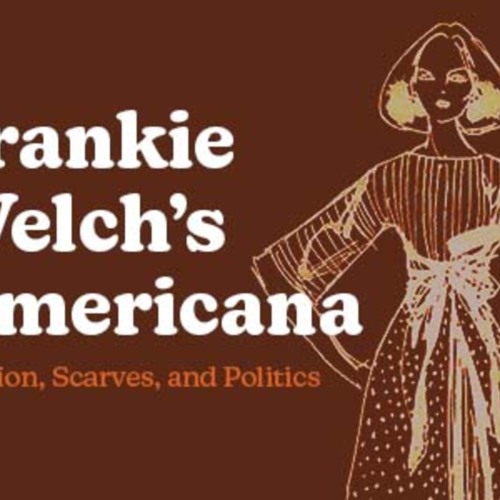
This site provides access to tour videos, activities, and other resources created with K-12 visitors in mind.
Field Trips to UGA Special Collections Libraries
We offer free fieldtrips for grades K-12. Each visit includes a guided tour of the exhibit galleries and a game/craft activity and lasts 90 minutes. To learn more, visit: libs.uga.edu/scl/visit/fieldtrips
In-School Offerings
We know a visit to the UGA Special Collections Building is not possible for every group. In addition to the resources o this site, we also offer in-school visits. Read below to find out more about our in-school offerings and reach out to sclib@uga.edu for more information.
Drinking Water, Wastewater, and Your Watershed
Engage your students in the ways of water with an interactive Enviroscape lesson covering the sources and treatment of drinking water and wastewater. This presentation works best for groups of 25 students or less and takes 30 minutes; an additional 20 minutes is required for setup (10) and cleanup (10).
Grade Level: 2-3
Standards Addressed:
S2E3. Obtain, evaluate, and communicate information about how weather, plants, animals, and humans cause changes to the environment.
- a. Ask questions to obtain information about major changes to the environment in your community.
- b. Construct an explanation of the causes and effects of a change to the environment in your community.
S3L2. Obtain, evaluate, and communicate information about the effects of pollution (air, land, and water) and humans on the environment.
- a. Ask questions to collect information and create records of sources and effects of pollution on the plants and animals.
- b. Explore, research, and communicate solutions, such as conservation of resources and recycling of materials, to protect plants and animals.
Histories Mysteries
In this presentation, students engage in inquiry-based learning by examining historical artifacts, making observations, and asking questions to learn more about their creation and use in the past. This presentation works best for groups of 25 students or less and takes 30 - 45 minutes; no additional time is required for setup and cleanup.
Grade Level: 2-5
Standards Addressed:
Social Studies Georgia Standards of Excellence,
Information Processing Skills
6. Identify and use primary and secondary sources
10. Analyze artifacts
11. Draw conclusions and make generalizations
A Brief History of Fashion
Take a journey through fashion history, revisiting trends by decade from the 1920s through the 2010s, with a slide presentation and selected historic textiles. Students will learn how fashion, society, and politics have interconnected in different time periods. This presentation works best for groups of 25 students or less and takes 50 minutes; 20 additional minutes are required for setup (10) and cleanup (10).
Grade Level: 6-8
Standards Addressed:
FCS-TS-2. Students will develop a general knowledge of textiles for interiors, furnishings and industrial use from a historic perspective to current applications.
- Examine the construction and use of textiles from antiquity to the industrial revolution.
- b. Examine the construction and use of textiles from the industrial revolution through the 21st century.
FCS-TS-9. Students will investigate how trends and color forecasting are used in the development of new products.
SCSh7. Students analyze how scientific knowledge is developed.
NFCS 16.3 Demonstrate fashion, apparel, and textile design skills.
Atlanta's Washington Park: Yesterday and Today
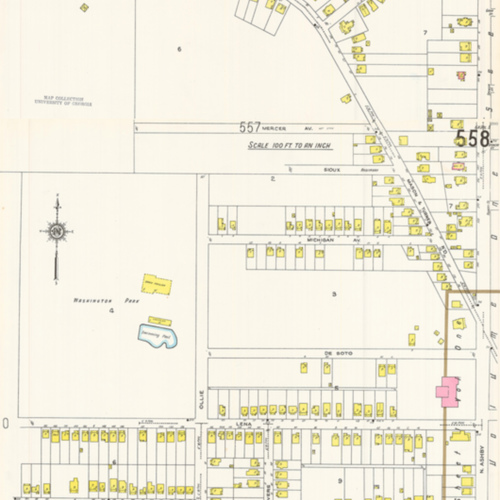
In 1919, the city of Atlanta began construction on Washington Park, the first recreational space built for use by the Black community in the city. Work on the park continued until 1928 and included the construction of a swimming pool, dance hall, pavilions, and tennis courts. The park became the centerpiece of a historically Black neighborhood developed by businessman Heman Perry in the 1920s, offering outdoor space and amenities that residents were denied in other areas of the city during the segregation era.
Housed at the Hargrett Library the Washington Park Historic District Archive is available for research and preserved for future generations. Donated by The Conservancy at Historic Washington Park, the collection documents the history of the Washington Park neighborhood and the efforts of the Conservancy and other civic and community organizations to celebrate, preserve, and develop the area.
This digital exhibit highlights items from this collection, as well as other resources that document the history of Washington Park, and provides an overview of the area’s historic structures, notable residents, and ongoing preservation work in the community today.
Not Only for Ourselves: The Integration of UGA Athletics
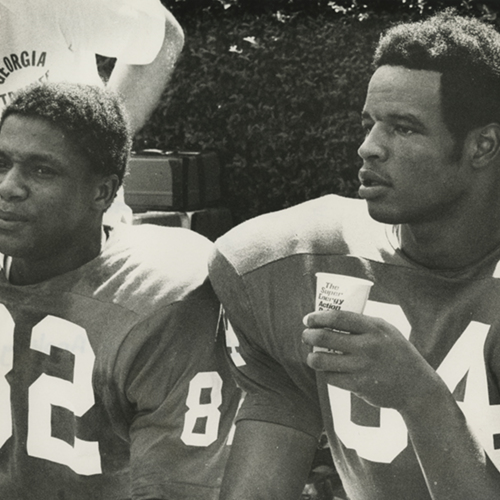
One day we will win our freedom. We will not only win freedom for ourselves, we will so appeal to your heart and your conscience that we will win you in the process. And our victory will be a double victory.
- Dr. Martin Luther King, Jr., 1966
Admission to the University of Georgia (UGA) was barred to Black students before 1961, when Hamilton Holmes and Charlayne Hunter were admitted to the University through the intervention of a Federal judge. Athletics, which are central to campus life in Southern universities, became the next focal point for desegregation.
This exhibit explores the integration of athletics at UGA. It attempts to provide context to the environment surrounding athletics at the University prior to the integration of its sports teams, as well as following the narrative of integration up to the present. It will run concurrently with a physical exhibit housed in the Russell Building Special Collections Libraries on the UGA campus.
While this exhibit is focused primarily on male athletics, we will explore the implementation of Title IX and the development of women's athletics at the University of Georgia in an exhibit to be opened in 2022.
Further research into the history of University of Georgia athletics can be done through the collections of the Hargrett Rare Book & Manuscript Library, which holds the archives of the University as well as the archives of the UGA Athletic Association.
All materials and photographs in this exhibit are from the collections of the Hargrett Rare Book & Manuscript Library, or used by permission of the UGA Athletic Association. Permission to copy or in any way re-use these images must be granted through the Hargrett Library or the UGA Athletic Association.
For more information on the Hargrett Library, please follow us on Facebook, Twitter and Instagram. As well as updates on our collections, exhibits, and programs, we offer photos and information relating to the history of UGA and Athens.
The Georgia Open History Library
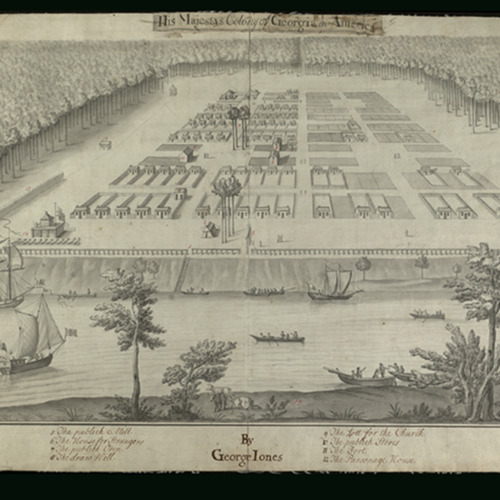
In 2026, the United States will mark the 250th anniversary of its founding. In anticipation of this event, the University of Georgia Press has developed the Georgia Open History Library: From Colony to Statehood in the New Union. This resource provides free digital access to the 45 out of print volumes focused on Georgia from the colony's founding through the American Revolution in Georgia; the Creek Nation; the papers of Revolutionary War General Lachlan McIntosh and the state's founder James Edward Oglethorpe; and records of the German-speaking Protestant Salzburger settlement.
This digital exhibit showcases a selection of original manuscripts and rare books held by the Hargrett Library documented in these newly digitized volumes. A physical exhibit of these materials is currently on display at the UGA Special Collections Building; high resolution scans and transcriptions of these documents can be found in the Digital Library of Georgia.
The Georgia Open History Library has been made possible in part by a major grant from the National Endowment for the Humanities: Democracy demands wisdom. Any views, findings, conclusions, or recommendations expressed in this collection, do not necessarily represent those of the National Endowment for the Humanities. To learn more, visit the Georgia Open History Library website.
